In that seven years, I've had quite a bit of opportunity to tackle difficult jobs, learn by trial and error, meet and work alongside some of the "big names" in smithing, and travel the mid-west as a teacher, and as a demonstrator at the largest blacksmithing conference in the States.
Its been quite a journey, a lot of hard work, and an amazing amount of Providential fortune to get to where I am now. I don't claim to know it all, and even if I did, I still do not have the experience to tackle anything with ease. However, I have gained the needed skills and experience to begin helping others begin their own journey as a blacksmith, whether they desire to pursue it as a hobby or as a proffession.
It's been a month now, but as I'm still trying to catch up on blogging, I wanted to share my latest blacksmithing class.
My student was a young man by the name of Blake. A friend of his, Mr Jonathan, came along as well and watched and lended a hand.
Blake wanted to make a four-pound hand hammer. I suggested we start with a hot-cut hardy, and then do the hammer. (A suggestion passed on to me by my primary teacher Brian Brazeal.) The hardy is an excellent tool to start with as it shows technique, is an important tool, and it gets you loosened up for the heavy striking needed on the hammer. It also allows the instructor to gauge the skill level of the student. If the student doesn't possess the ability to swing a sledge hammer reasonbly accurately and heavily, then a smaller hammer might be in order.
So, Mr Blake and Mr Jonathan arrived on a Saturday morning around 8 AM, and we began work. Blake swung the 10 pound sledge hammer during the hardy making time. He did a marvelous job, and turned out a very nice hardy.
He did such a fine job on the hardy, that I knew that he was ready to move on to the four-pound hammer. Now, for those of you who haven't done a whole lot of hammer making, a four-pound hammer is no walk in the park. It requires a lot of heavy, accurate, striking to get done in a timely manner. It is very taxing work for the striker.
Blake turned out a very nice four-pound rounding hammer in a very timely manner. We didn't set any time-records for hammer making, but his striking was right on, he missed very few blows for a first timer, and the work progressed steadly and quite fast for his experience level. As an experienced director, having worked with some fine experienced strikers, I can honestly say it was a real pleasure to work with Blake as a striker.
Here is a photo run of making the hammer.
Like I said, striking for this sort of thing is no walk in the park, especially seeing that for the four-pound hammer, we switched to the 14.25-pound sledge. We got to an easier part of the process and I switched off to striking. I did this for a couple of reasons. It gave Blake a chance to get on the director's side of the action, which is very important as it allows you to see the other side of what is going on. It also gave him a bit of a breather.
Here's a shot of us tempering the hammer.
And here I am putting the handle on.
The finished tools!

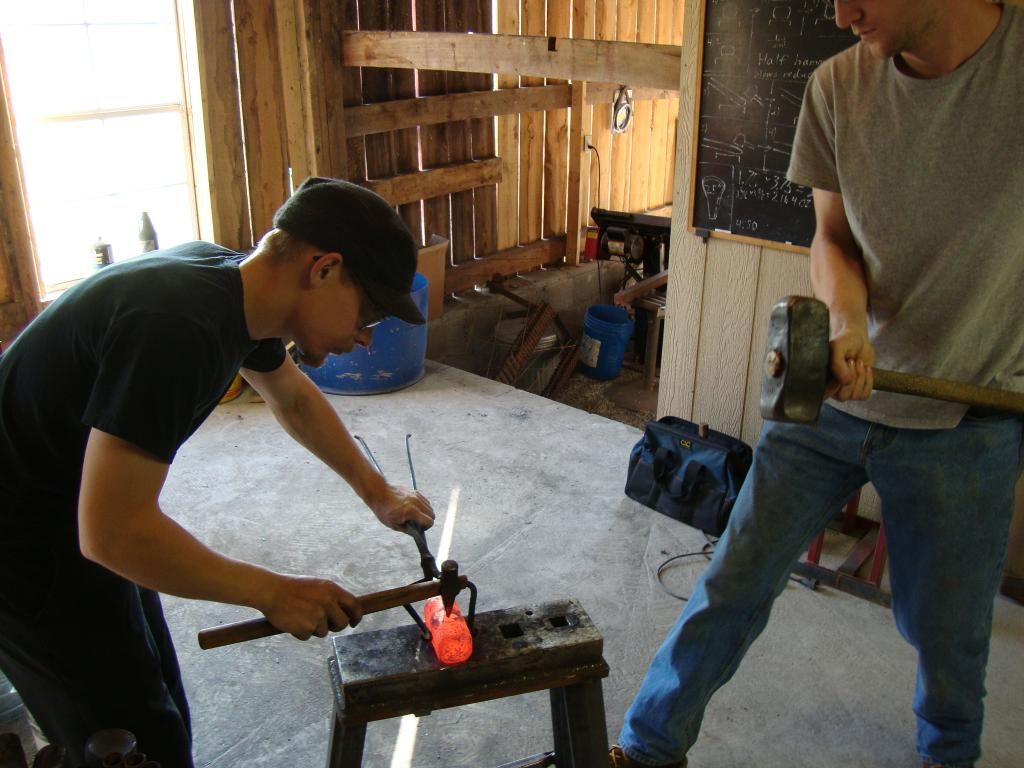


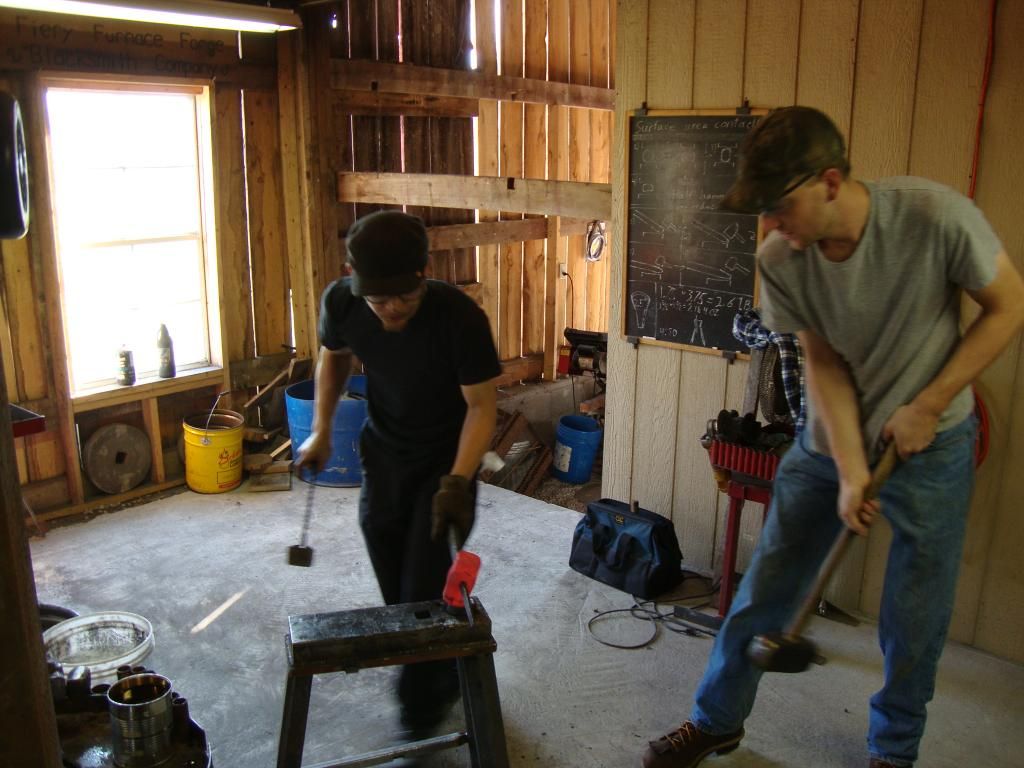
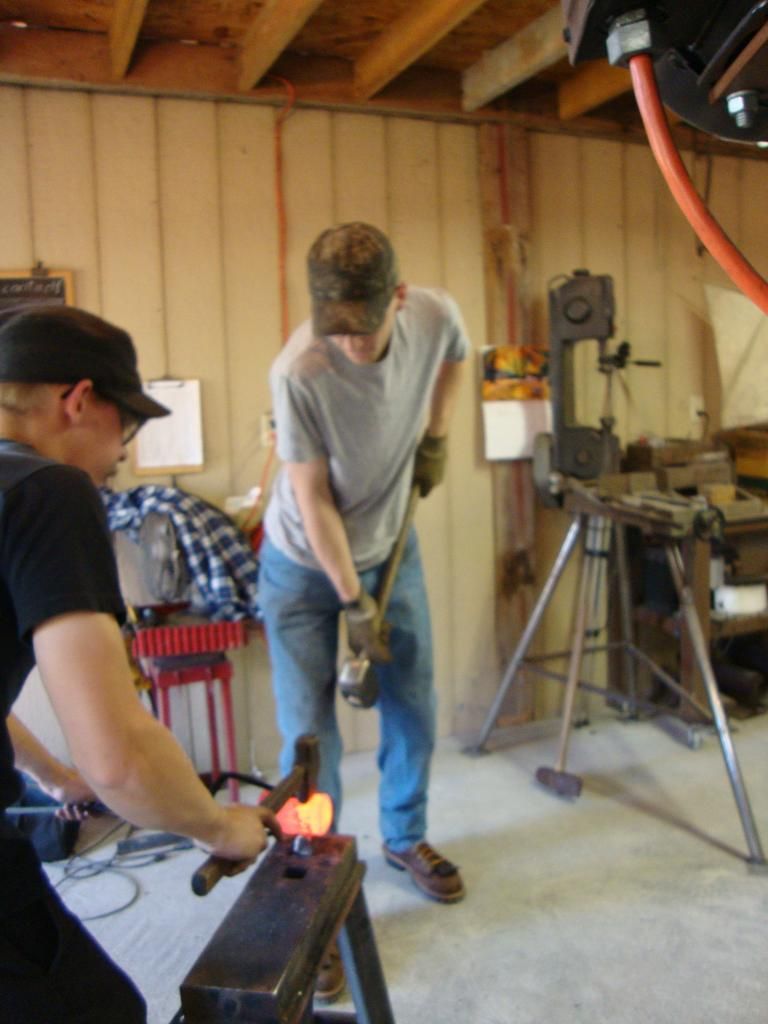
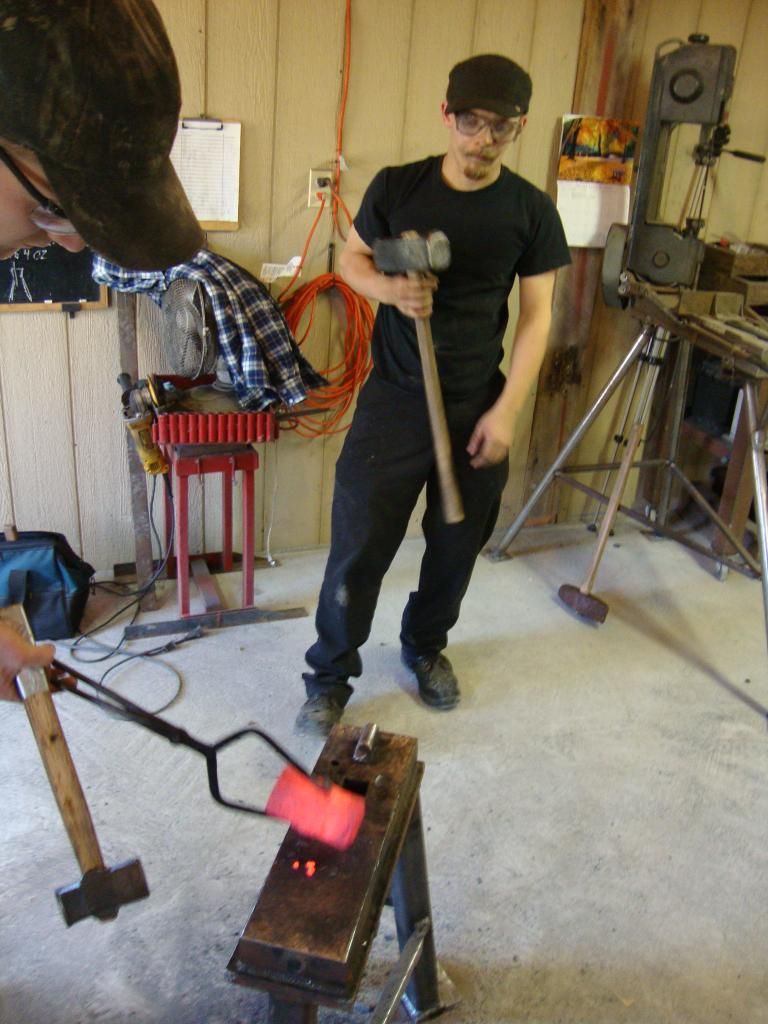
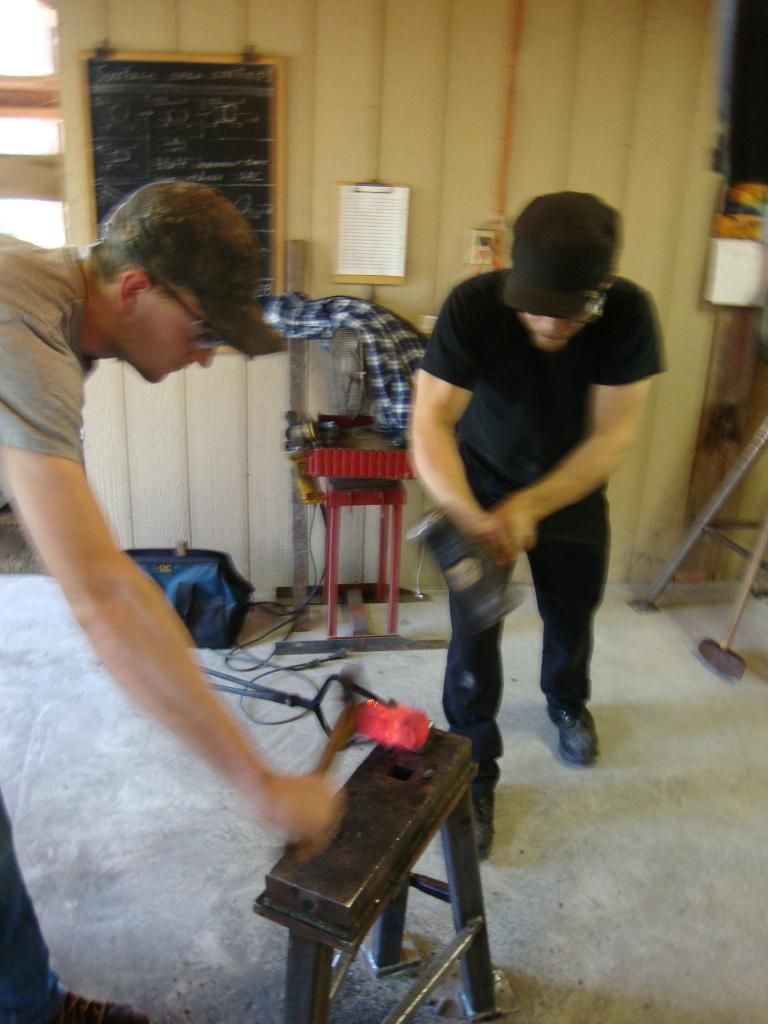
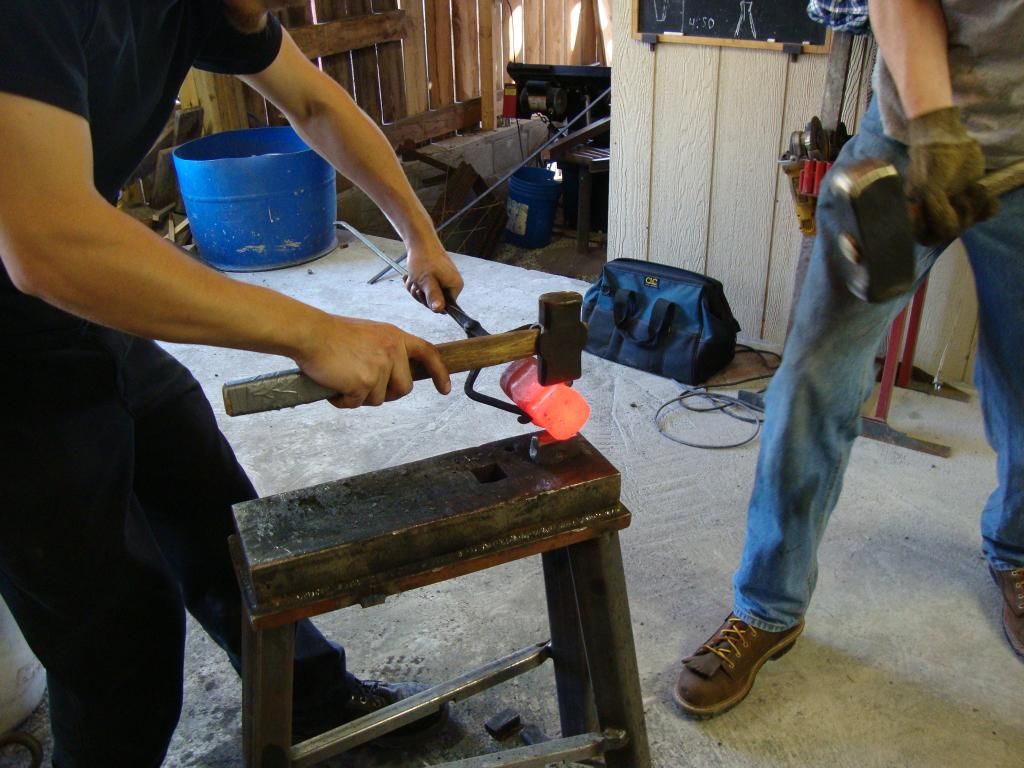
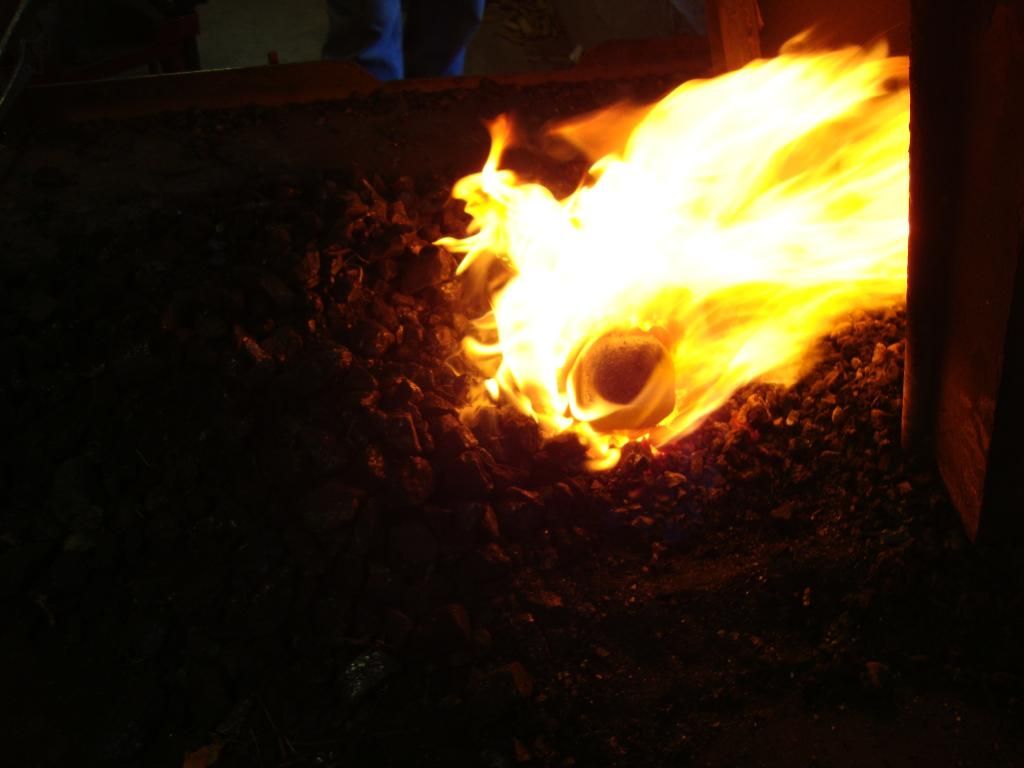


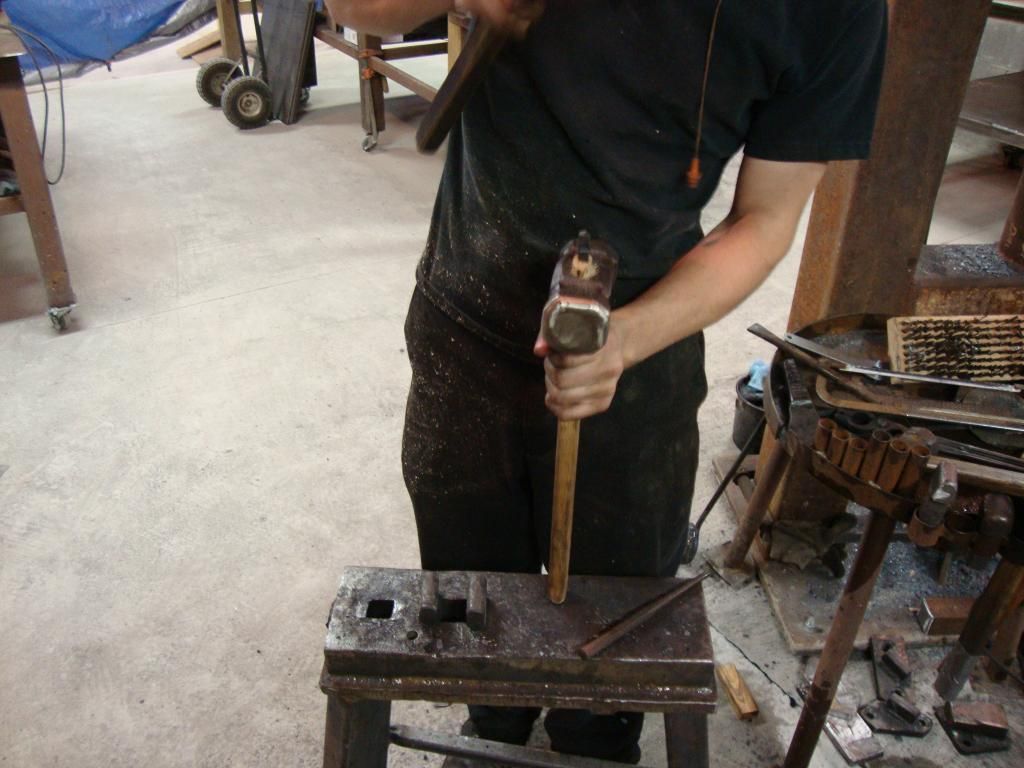

1 comment:
Now that was *awesome*.
Post a Comment